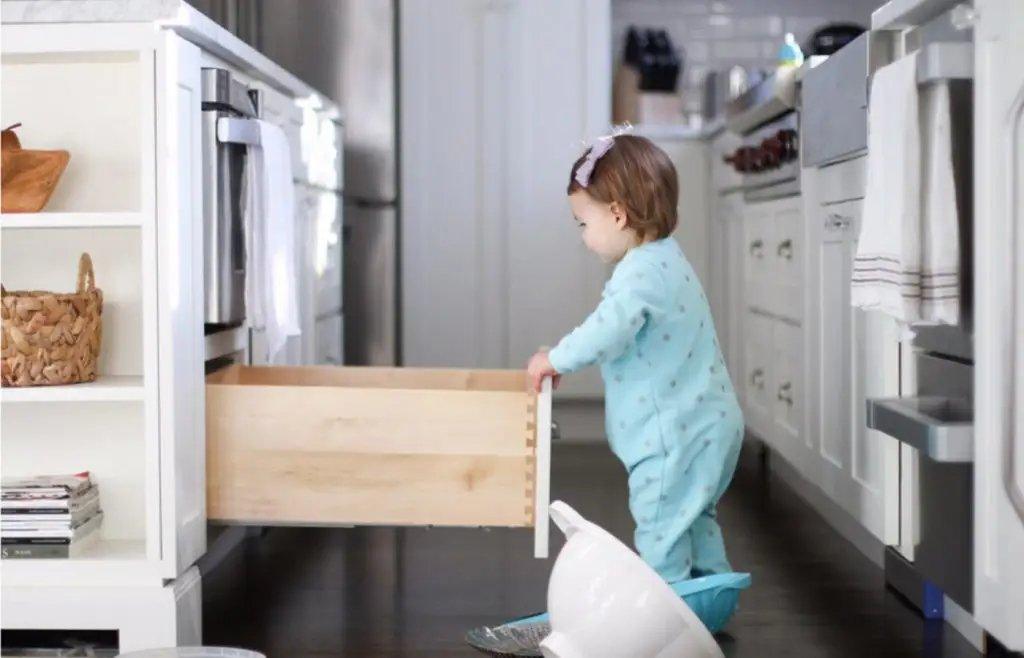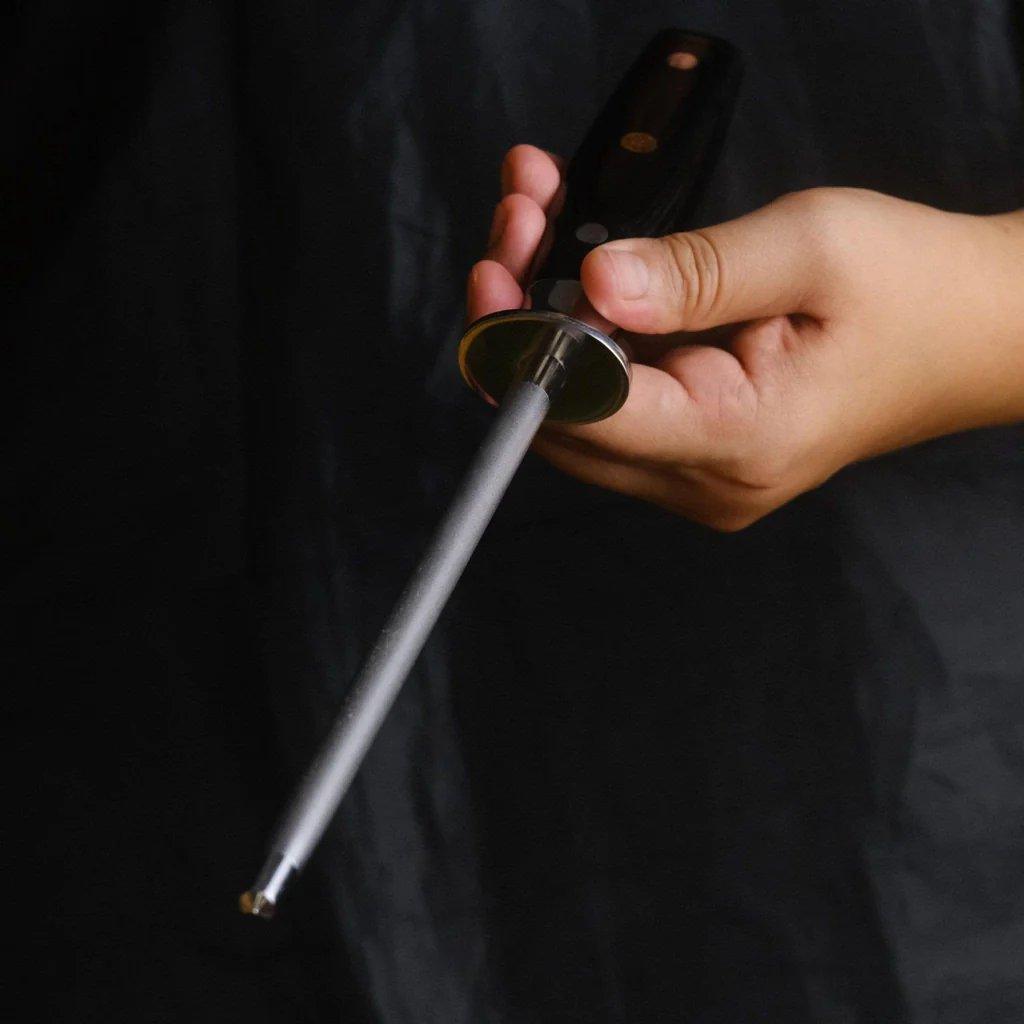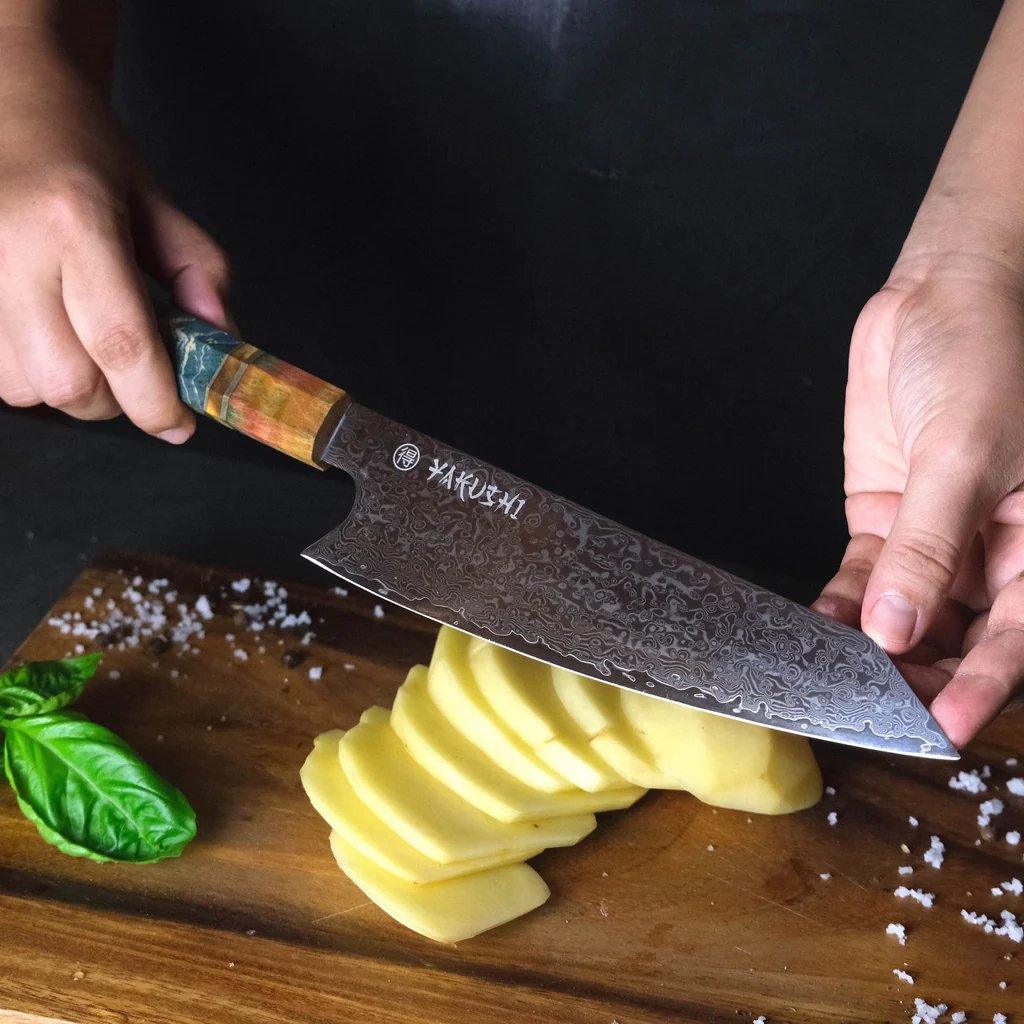Ensuring Child Safety in Your Kitchen:
Tips and Guidelines

Tips and Guidelines For Child Safety in Kitchen
Safety from Sharp Objects
- Store knives, scissors, and other sharp tools in locked drawers, knife holders or high cabinets outside children's reach.
- Consider magnetic strips for storing knives out of reach but securely.
- Use blade guards on knives and store sharp appliances like food processors with their attachments disconnected and secured.
Childproofing Cabinets and Drawers
- Install safety latches that lock when the drawer or cabinet is closed. These latches should be strong enough to resist pulls from children but easy for adults to operate.
- Use magnetic locks as an alternative, where you can open the lock with a magnetic key that can be stored out of reach of children.
Secure Electrical Outlets
- Cover all unused electrical outlets with safety plugs or sliding covers to prevent children from inserting objects into the sockets.
- Ensure that the kitchen appliances are kept away from the edge of the counters and unplugged when not in use, with cords secured to avoid tripping or pulling.
Safe Handling of Hot Appliances
- Teach children the dangers of touching hot appliances and use visual safety markers like tape to define zones they should avoid.
- Use the back burners of the stove and turn the pot handles toward the back to prevent accidental spills.
- Implement "no kids" zones around stoves and ovens when they are in use.

Teach Kitchen Safety Rules
- Establish clear rules such as "no touching" zones around cooking areas and "ask for help" when they want to participate.
- Engage children in safe kitchen activities like washing fruits and vegetables or measuring ingredients to teach them about kitchen safety tips actively.
Avoid Loose Clothing
- Dress children in fitted clothing without dangling strings or loose parts that can catch on handles or knobs.
- Encourage wearing short sleeves or tightly rolled up sleeves when they help in the kitchen to avoid catching fire or getting tangled.
Practice Fire Safety
- Install a smoke detector in the kitchen to alert in case of fire.
- Keep a fire extinguisher accessible and teach older children how to use it appropriately.
- Regularly practice fire drills and teach children to never hide in case of a fire but to go outside immediately.
First Aid Kit
- Keep a fully stocked first aid kit in the kitchen, easily accessible in case of minor accidents.
- Include items specifically for burns and cuts, such as sterile gauze, burn cream, and waterproof bandages.
- Teach children the basics of wound care and when to seek adult help.




Leave a comment
This site is protected by hCaptcha and the hCaptcha Privacy Policy and Terms of Service apply.